[English] 日本語
 Yorodumi
Yorodumi- PDB-2znv: Crystal structure of human AMSH-LP DUB domain in complex with Lys... -
+ Open data
Open data
- Basic information
Basic information
| Entry | Database: PDB / ID: 2znv | ||||||
|---|---|---|---|---|---|---|---|
| Title | Crystal structure of human AMSH-LP DUB domain in complex with Lys63-linked ubiquitin dimer | ||||||
 Components Components |
| ||||||
 Keywords Keywords | HYDROLASE/Signaling Protein / protein complex / metal binding protein / Alternative splicing / Hydrolase / Metal-binding / Metalloprotease / Protease / Ubl conjugation pathway / Zinc / Cytoplasm / Nucleus / Phosphoprotein / HYDROLASE-Signaling Protein COMPLEX | ||||||
| Function / homology |  Function and homology information Function and homology information: / : / APC/C:Cdc20 mediated degradation of Cyclin B / SCF-beta-TrCP mediated degradation of Emi1 / APC-Cdc20 mediated degradation of Nek2A / ER Quality Control Compartment (ERQC) / Regulation of PTEN localization / Regulation of pyruvate metabolism / Downregulation of ERBB2:ERBB3 signaling / IRAK2 mediated activation of TAK1 complex ...: / : / APC/C:Cdc20 mediated degradation of Cyclin B / SCF-beta-TrCP mediated degradation of Emi1 / APC-Cdc20 mediated degradation of Nek2A / ER Quality Control Compartment (ERQC) / Regulation of PTEN localization / Regulation of pyruvate metabolism / Downregulation of ERBB2:ERBB3 signaling / IRAK2 mediated activation of TAK1 complex / SMAD2/SMAD3:SMAD4 heterotrimer regulates transcription / PTK6 Regulates RTKs and Their Effectors AKT1 and DOK1 / Gap-filling DNA repair synthesis and ligation in GG-NER / Fanconi Anemia Pathway / Endosomal Sorting Complex Required For Transport (ESCRT) / Negative regulation of FLT3 / Synthesis of active ubiquitin: roles of E1 and E2 enzymes / Regulation of expression of SLITs and ROBOs / IRAK1 recruits IKK complex / IRAK1 recruits IKK complex upon TLR7/8 or 9 stimulation / Downregulation of ERBB4 signaling / E3 ubiquitin ligases ubiquitinate target proteins / Downregulation of TGF-beta receptor signaling / TGF-beta receptor signaling in EMT (epithelial to mesenchymal transition) / Stabilization of p53 / NOTCH3 Activation and Transmission of Signal to the Nucleus / Negative regulators of DDX58/IFIH1 signaling / Alpha-protein kinase 1 signaling pathway / Pexophagy / JNK (c-Jun kinases) phosphorylation and activation mediated by activated human TAK1 / Translesion synthesis by REV1 / Downregulation of SMAD2/3:SMAD4 transcriptional activity / Negative regulation of FGFR3 signaling / Negative regulation of FGFR4 signaling / Translesion synthesis by POLK / Regulation of NF-kappa B signaling / Negative regulation of FGFR1 signaling / Negative regulation of FGFR2 signaling / Regulation of TP53 Activity through Methylation / Formation of a pool of free 40S subunits / NRIF signals cell death from the nucleus / Translesion synthesis by POLI / Regulation of BACH1 activity / Recognition of DNA damage by PCNA-containing replication complex / p75NTR recruits signalling complexes / Interferon alpha/beta signaling / Negative regulation of MAPK pathway / Spry regulation of FGF signaling / SRP-dependent cotranslational protein targeting to membrane / Regulation of TP53 Degradation / Translesion Synthesis by POLH / Activated NOTCH1 Transmits Signal to the Nucleus / Formation of TC-NER Pre-Incision Complex / Major pathway of rRNA processing in the nucleolus and cytosol / Negative regulation of MET activity / TRAF6-mediated induction of TAK1 complex within TLR4 complex / IRAK2 mediated activation of TAK1 complex upon TLR7/8 or 9 stimulation / Termination of translesion DNA synthesis / Nonsense Mediated Decay (NMD) independent of the Exon Junction Complex (EJC) / Autodegradation of Cdh1 by Cdh1:APC/C / APC/C:Cdc20 mediated degradation of Securin / Senescence-Associated Secretory Phenotype (SASP) / Josephin domain DUBs / DNA Damage Recognition in GG-NER / Dual Incision in GG-NER / Ubiquitin-Mediated Degradation of Phosphorylated Cdc25A / Ubiquitin-dependent degradation of Cyclin D / Regulation of TBK1, IKKε (IKBKE)-mediated activation of IRF3, IRF7 / AUF1 (hnRNP D0) binds and destabilizes mRNA / Downregulation of ERBB2 signaling / Dual incision in TC-NER / Oncogene Induced Senescence / PINK1-PRKN Mediated Mitophagy / Nonsense Mediated Decay (NMD) enhanced by the Exon Junction Complex (EJC) / Cdc20:Phospho-APC/C mediated degradation of Cyclin A / SCF(Skp2)-mediated degradation of p27/p21 / N-glycan trimming in the ER and Calnexin/Calreticulin cycle / TNFR1-induced NF-kappa-B signaling pathway / Assembly of the pre-replicative complex / CDK-mediated phosphorylation and removal of Cdc6 / HDR through Homologous Recombination (HRR) / Gap-filling DNA repair synthesis and ligation in TC-NER / Inactivation of CSF3 (G-CSF) signaling / TCF dependent signaling in response to WNT / Metalloprotease DUBs / Formation of Incision Complex in GG-NER / Activation of IRF3, IRF7 mediated by TBK1, IKKε (IKBKE) / EGFR downregulation / Autodegradation of the E3 ubiquitin ligase COP1 / MAP3K8 (TPL2)-dependent MAPK1/3 activation / G2/M Checkpoints / Degradation of AXIN / Regulation of FZD by ubiquitination / Regulation of TNFR1 signaling / Asymmetric localization of PCP proteins / APC/C:Cdh1 mediated degradation of Cdc20 and other APC/C:Cdh1 targeted proteins in late mitosis/early G1 / Regulation of RUNX3 expression and activity / Regulation of RAS by GAPs / Regulation of PTEN stability and activity / Regulation of RUNX2 expression and activity Similarity search - Function | ||||||
| Biological species |  Homo sapiens (human) Homo sapiens (human) | ||||||
| Method |  X-RAY DIFFRACTION / X-RAY DIFFRACTION /  SYNCHROTRON / SYNCHROTRON /  MOLECULAR REPLACEMENT / Resolution: 1.6 Å MOLECULAR REPLACEMENT / Resolution: 1.6 Å | ||||||
 Authors Authors | Sato, Y. / Azusa, Y. / Yamagata, A. / Mimura, H. / Wang, X. / Yamashita, M. / Ookata, K. / Nureki, O. / Iwai, K. / Komada, M. / Fukai, S. | ||||||
 Citation Citation |  Journal: Nature / Year: 2008 Journal: Nature / Year: 2008Title: Structural basis for specific cleavage of Lys 63-linked polyubiquitin chains Authors: Sato, Y. / Yoshikawa, A. / Yamagata, A. / Mimura, H. / Yamashita, M. / Ookata, K. / Nureki, O. / Iwai, K. / Komada, M. / Fukai, S. | ||||||
| History |
|
- Structure visualization
Structure visualization
| Structure viewer | Molecule:  Molmil Molmil Jmol/JSmol Jmol/JSmol |
|---|
- Downloads & links
Downloads & links
- Download
Download
| PDBx/mmCIF format |  2znv.cif.gz 2znv.cif.gz | 152.3 KB | Display |  PDBx/mmCIF format PDBx/mmCIF format |
|---|---|---|---|---|
| PDB format |  pdb2znv.ent.gz pdb2znv.ent.gz | 117.9 KB | Display |  PDB format PDB format |
| PDBx/mmJSON format |  2znv.json.gz 2znv.json.gz | Tree view |  PDBx/mmJSON format PDBx/mmJSON format | |
| Others |  Other downloads Other downloads |
-Validation report
| Summary document |  2znv_validation.pdf.gz 2znv_validation.pdf.gz | 470.4 KB | Display |  wwPDB validaton report wwPDB validaton report |
|---|---|---|---|---|
| Full document |  2znv_full_validation.pdf.gz 2znv_full_validation.pdf.gz | 475.9 KB | Display | |
| Data in XML |  2znv_validation.xml.gz 2znv_validation.xml.gz | 30.9 KB | Display | |
| Data in CIF |  2znv_validation.cif.gz 2znv_validation.cif.gz | 45.8 KB | Display | |
| Arichive directory |  https://data.pdbj.org/pub/pdb/validation_reports/zn/2znv https://data.pdbj.org/pub/pdb/validation_reports/zn/2znv ftp://data.pdbj.org/pub/pdb/validation_reports/zn/2znv ftp://data.pdbj.org/pub/pdb/validation_reports/zn/2znv | HTTPS FTP |
-Related structure data
| Related structure data |  2znrSC 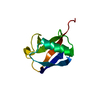 1ubqS S: Starting model for refinement C: citing same article ( |
|---|---|
| Similar structure data |
- Links
Links
- Assembly
Assembly
| Deposited unit | 
| ||||||||
|---|---|---|---|---|---|---|---|---|---|
| 1 | 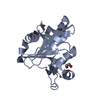
| ||||||||
| 2 | 
| ||||||||
| 3 | 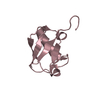
| ||||||||
| 4 | 
| ||||||||
| 5 | 
| ||||||||
| 6 | 
| ||||||||
| Unit cell |
|
- Components
Components
-Protein , 3 types, 6 molecules ADBECF
| #1: Protein | Mass: 19916.230 Da / Num. of mol.: 2 / Fragment: MPN domain, DUB domain, UNP residues 264-436 / Mutation: E292A Source method: isolated from a genetically manipulated source Source: (gene. exp.)  Homo sapiens (human) / Plasmid: pCold GST / Production host: Homo sapiens (human) / Plasmid: pCold GST / Production host:  #2: Protein | Mass: 8604.845 Da / Num. of mol.: 2 / Mutation: K63R Source method: isolated from a genetically manipulated source Source: (gene. exp.)   #3: Protein | Mass: 8691.918 Da / Num. of mol.: 2 / Mutation: M77D Source method: isolated from a genetically manipulated source Source: (gene. exp.)   |
|---|
-Non-polymers , 3 types, 610 molecules 
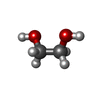



| #4: Chemical | | #5: Chemical | #6: Water | ChemComp-HOH / | |
|---|
-Details
| Has protein modification | Y |
|---|
-Experimental details
-Experiment
| Experiment | Method:  X-RAY DIFFRACTION / Number of used crystals: 1 X-RAY DIFFRACTION / Number of used crystals: 1 |
|---|
- Sample preparation
Sample preparation
| Crystal | Density Matthews: 2.17 Å3/Da / Density % sol: 43.35 % |
|---|---|
| Crystal grow | Temperature: 293 K / Method: vapor diffusion, sitting drop / pH: 7 Details: 180mM tri-ammonium citrate (pH 7.0), 24% PEG 3350, 3% 1,6-Hexanediol, VAPOR DIFFUSION, SITTING DROP, temperature 293K |
-Data collection
| Diffraction | Mean temperature: 100 K |
|---|---|
| Diffraction source | Source:  SYNCHROTRON / Site: SYNCHROTRON / Site:  Photon Factory Photon Factory  / Beamline: AR-NW12A / Wavelength: 1 Å / Beamline: AR-NW12A / Wavelength: 1 Å |
| Detector | Type: ADSC QUANTUM 210 / Detector: CCD / Date: Mar 9, 2008 / Details: mirrors |
| Radiation | Protocol: SINGLE WAVELENGTH / Monochromatic (M) / Laue (L): M / Scattering type: x-ray |
| Radiation wavelength | Wavelength: 1 Å / Relative weight: 1 |
| Reflection | Resolution: 1.6→87.04 Å / Num. all: 83683 / Num. obs: 83683 / % possible obs: 97.3 % / Observed criterion σ(F): 0 / Observed criterion σ(I): -0.5 / Rmerge(I) obs: 0.068 / Net I/σ(I): 16.9 |
| Reflection shell | Resolution: 1.6→1.62 Å / Rmerge(I) obs: 0.267 / Mean I/σ(I) obs: 3.2 / % possible all: 90.7 |
- Processing
Processing
| Software |
| ||||||||||||||||||||||||||||||||||||||||||||||||||||||||||||||||||||||||||||||||||||||||||||||||||||||||||||||||||||||||||||||||||||||||||||||||||||||||||||||||||||||||||
|---|---|---|---|---|---|---|---|---|---|---|---|---|---|---|---|---|---|---|---|---|---|---|---|---|---|---|---|---|---|---|---|---|---|---|---|---|---|---|---|---|---|---|---|---|---|---|---|---|---|---|---|---|---|---|---|---|---|---|---|---|---|---|---|---|---|---|---|---|---|---|---|---|---|---|---|---|---|---|---|---|---|---|---|---|---|---|---|---|---|---|---|---|---|---|---|---|---|---|---|---|---|---|---|---|---|---|---|---|---|---|---|---|---|---|---|---|---|---|---|---|---|---|---|---|---|---|---|---|---|---|---|---|---|---|---|---|---|---|---|---|---|---|---|---|---|---|---|---|---|---|---|---|---|---|---|---|---|---|---|---|---|---|---|---|---|---|---|---|---|---|---|
| Refinement | Method to determine structure:  MOLECULAR REPLACEMENT MOLECULAR REPLACEMENTStarting model: PDB ENTRIES 2ZNR and 1ubq Resolution: 1.6→32.47 Å / Cor.coef. Fo:Fc: 0.949 / Cor.coef. Fo:Fc free: 0.932 / SU B: 1.629 / SU ML: 0.059 / Cross valid method: THROUGHOUT / ESU R: 0.097 / ESU R Free: 0.096 / Stereochemistry target values: MAXIMUM LIKELIHOOD Details: HYDROGENS HAVE BEEN ADDED IN THE RIDING POSITIONS; The depositors have noticed that 1.7 A is out of range for the link between the GLY76 C atom and the LYS63 NZ atom. However, Refmac5 ...Details: HYDROGENS HAVE BEEN ADDED IN THE RIDING POSITIONS; The depositors have noticed that 1.7 A is out of range for the link between the GLY76 C atom and the LYS63 NZ atom. However, Refmac5 refined the bond length up to 1.7 A, despite of the declaration of the link record. And, actually, the electron density map shows a little bit longer bonding. So, they concluded that this atypical bonding likely occurs in their structure.
| ||||||||||||||||||||||||||||||||||||||||||||||||||||||||||||||||||||||||||||||||||||||||||||||||||||||||||||||||||||||||||||||||||||||||||||||||||||||||||||||||||||||||||
| Solvent computation | Ion probe radii: 0.8 Å / Shrinkage radii: 0.8 Å / VDW probe radii: 1.2 Å / Solvent model: MASK | ||||||||||||||||||||||||||||||||||||||||||||||||||||||||||||||||||||||||||||||||||||||||||||||||||||||||||||||||||||||||||||||||||||||||||||||||||||||||||||||||||||||||||
| Displacement parameters | Biso mean: 15.093 Å2
| ||||||||||||||||||||||||||||||||||||||||||||||||||||||||||||||||||||||||||||||||||||||||||||||||||||||||||||||||||||||||||||||||||||||||||||||||||||||||||||||||||||||||||
| Refinement step | Cycle: LAST / Resolution: 1.6→32.47 Å
| ||||||||||||||||||||||||||||||||||||||||||||||||||||||||||||||||||||||||||||||||||||||||||||||||||||||||||||||||||||||||||||||||||||||||||||||||||||||||||||||||||||||||||
| Refine LS restraints |
| ||||||||||||||||||||||||||||||||||||||||||||||||||||||||||||||||||||||||||||||||||||||||||||||||||||||||||||||||||||||||||||||||||||||||||||||||||||||||||||||||||||||||||
| LS refinement shell | Resolution: 1.599→1.64 Å / Total num. of bins used: 20
|
 Movie
Movie Controller
Controller


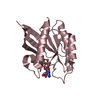
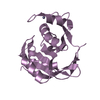
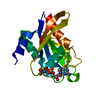

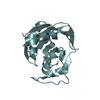


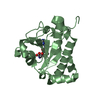
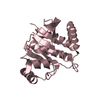

 PDBj
PDBj
























